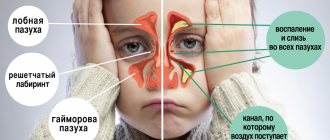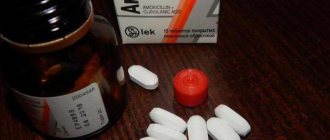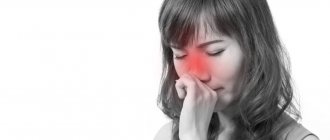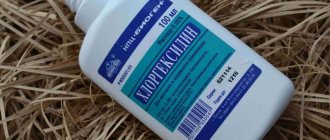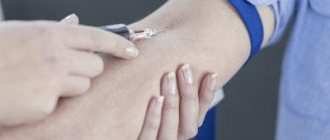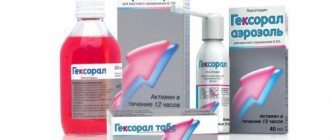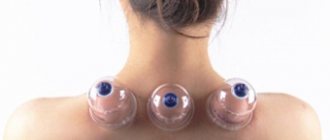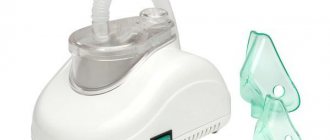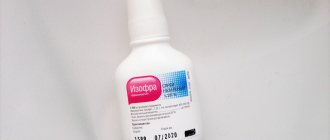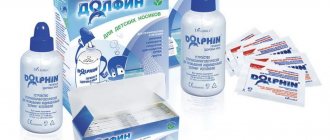general information
Lincomycin is a drug belonging to the lincosamide group of antibiotics. Effectively fights anaerobic bacteria and mycoplasmas. Has bactericidal properties. It is not able to counteract the development and reproduction of gram-negative microbes, fungi, and viruses.
In its structure, Lincomycin is a white powder with a bitter taste. Used for filling capsules and preparing solutions for injection.
- Capsules with powder for oral administration
- Ampoules and bottles with injection solution
- Pills
- Ointment
The active trace element of the drug is lincomycin, which blocks the production of protein by pathogenic cells. When used in large dosages, it performs a bactericidal role.
Indications for use:
- Infectious inflammation of the blood or body tissues
- Pneumonia
- diseases of the lungs, bronchi, trachea with purulent exudate
- Non-healing wounds after operations with the threat of suppuration
- Inflammation of the nose, sinuses, mouth with purulent discharge (sinusitis, sinusitis, pharyngitis)
- Purulent diseases of the skin
- Inflammation of soft tissues in the oral cavity after tooth extraction
Depending on the severity of the disease, the medication is used in a certain form. If skin diseases are detected, ointment is used; if sinusitis or infections of internal organs are detected, Lincomycin injections are prescribed.
Overdose
Thanks to the various release forms, Lincomycin can be taken in various situations. So the drug, sold in capsules, is taken several hours before meals, with a large volume of water. The dosage rate for the medication is 500 mg up to 4 times a day. The duration of therapy is 7-14 days. In case of osteomyelitis formation – 3 weeks.
For small patients, capsules are recommended in a volume of 30-60 mg per 1 kg. weight. If such a need is identified, then the active drug is administered intravenously in a volume of 10-20 mg per 1 kg. baby's weight. The procedure is carried out every 8-12 hours.
Intramuscular injections are recommended in a volume of 600 mg per day, 1 or 2 times. When carrying out treatment using a dropper, the medication is administered several times in 24 hours.
Lincomycin ointment is used according to the instructions for use only for external use or for application to the upper layer of epithelium in the oral cavity. The oily substance has a positive effect only on a surface that has been previously cleaned.
Lincomycin ointment is used to treat children no more than 1-2 times a day for 5-7 days. This is explained by the fact that a child’s skin may react differently to the components of the medicine.
For adults, use is allowed for 10-12 days. But it is necessary to control the body’s sensitivity to the active substance.
It is recommended to take Lincomycin-AKOS with caution in case of development of dermatological diseases, as well as problems of fungal infection of various areas of the skin.
Many dental diseases require treatment with antibacterial agents.
Depending on the characteristics of the inflammatory process, drugs of various groups are prescribed. One of the commonly used drugs is Lincomycin.
Due to its wide spectrum of action, Lincomycin is used for drug therapy for pathologies whose development was provoked by gram-positive flora.
By changing the dosage, it is possible to ensure that the drug is present in the body in the concentration necessary to achieve a certain clinical effect.
It often happens that diseases of the oral cavity are accompanied by infection, and then antibiotics cannot be avoided. Lincomycin has proven itself well in dentistry. We will describe the instructions for use, price and reviews of the drug in more detail.
It is important to follow the instructions to eliminate the problem as quickly as possible and without harm to the body.
It often happens that diseases of the oral cavity are accompanied by infection, and then antibiotics cannot be avoided. Lincomycin has proven itself well in dentistry. We will describe the instructions for use, price and information about the drug in more detail.
The daily dose of Lincomycin for parenteral administration is 1.8 g, single - no more than 0.6 g. If the infection is severe, the dosage can be increased to 2.4 g, divided into three doses with an eight-hour interval. For children, the dose of lyophilisate when administered intravenously is 10-20 mg/kg, regardless of age. Lincomycin is administered intravenously only by drip, the optimal rate is 60-80 drops/min.
Lincomycin capsules are taken orally 1-2 hours before meals. For adults, the maximum dosage of Lincomycin capsules is 1-1.5 g, and a single dosage is no more than 0.5 g. For children, Lincomycin capsules should not be prescribed more than 30-60 mg/kg per day.
The duration of treatment with Lincomycin depends on the form of the disease, but generally does not exceed 1-2 weeks. The exception is osteomyelitis, when treatment can last up to three or more weeks.
If the course of treatment is long, it is necessary to monitor liver and kidney functions.
If the patient has been prescribed Lincomycin injections, the instructions for use must be carefully followed during the treatment process. The drug in ampoules can be administered intravenously and intramuscularly. The daily dose of the drug for an adult patient should be no more than 1.8 g; if the disease is severe, the doctor can increase it to 2.4 g.
For infectious diseases, Lincomycin capsules are also prescribed. The instructions for use recommend taking the drug in capsules for sore throat, as well as for sinusitis, either 1 hour before a meal, or 2 hours after taking it. The tablets cannot be chewed, they must be swallowed whole with plenty of liquid.
When using the medicine in dentistry, as well as in the treatment of other infectious diseases, as a rule, Lincomycin is prescribed 500 mg three times a day. For severe symptoms, the dose can be increased to 500 mg of the drug four times a day. As a rule, the course of treatment lasts from 1 to 2 weeks.
Lincomycin ointment is prescribed externally. The instructions for use indicate that Lincomycin-AKOS ointment should be applied directly to the affected area in a thin layer. This procedure must be done 2-3 times a day.
There are no data on cases of acute overdose of the drug. If taken over a long period and in large doses, pseudomembranous colitis and candidiasis may occur. In this case, treatment with the drug should be suspended.
Each package of Lincomycin for injection contains 10 ampoules of 1 ml. Each ampoule contains 300 mg of the active substance (lincomycin hydrochloride), which corresponds to its concentration of 30%. The drug can be used from almost one month of age, i.e. practically no age restrictions.
However, this is due not so much to the safety of the drug - but to the fact that it is used in purulent surgery mainly for the treatment of septic conditions caused by staphylococcus and streptococcus, pneumonia, purulent infections of the skin and soft tissues, i.e. in such conditions when safety for children's health is a secondary factor.
Dosage regimen for intramuscular administration - usually for adults and children over 14 years of age with intramuscular injections into the buttock, a single dose is 600 mg, i.e. You need to take 2 ampoules of the drug into the syringe at once. Usually injections are given 2 times a day (morning and evening, with an interval of 12 hours). In severe cases, injections are given 3 times a day - with intervals of 8 hours between them. For children aged 1 month to 14 years, the daily dose is calculated according to the following scheme: 10-20 mg/per 1 kg of body weight/per day.
Capsules are taken orally; adults are prescribed 500 mg 3-4 times a day.
The solution is administered intramuscularly at 600 mg 1-2 times a day, intravenously - 2-3 times a day at 600 mg, diluted in 250 ml of isotonic solution of glucose or sodium chloride (administration rate 60-80 drops per minute) .
Children aged 1 month to 14 years are recommended to take orally at a dose of 30-60 mg/kg body weight per day, 10-20 mg/kg body weight intravenously every 8-12 hours.
The course of therapy is 7-14 days, maximum – up to 1 month.
Application and dosage
Lincomycin is often prescribed for purulent sinusitis. The form of taking the drug depends on the convenience of the patient.
During pregnancy, treatment with this medication is undesirable. The drug has the ability to penetrate through the placenta into the blood of the unborn child. Breastfeeding should also be stopped during treatment for sinusitis with Lincomycin.
Capsules and tablets
The drug for sinusitis is prescribed in tablet form only for those over 14 years of age. It is recommended to use them 1 – 2 hours before meals, or 2 hours after, so as not to slow down the absorption of the drug. The capsules are swallowed without chewing and washed down with plenty of warm water.
The dosage of the drug for adults is 500 mg per dose. Take three times a day. In case of acute infectious sinusitis, it is allowed to increase the dose or frequency of use of the drug.
Children under 14 years of age are rarely prescribed the drug in the form of tablets or capsules. Only intravenous injections are used. If children do not have problems with swallowing, then the dosage of Lincomycin for sinusitis is 30–60 mg per kilogram of weight. Noma is divided into three steps.
The course of taking the drug for sinusitis is no more than 10 days. If during the first 3 days the patient does not feel any improvement, additional research should be conducted to determine the type of microbes causing the disease.
Solution
Lincomycin can be administered in the form of a solution into a vein or into the muscle tissue of the body. There are no age restrictions.
The dose should be prescribed in a medical institution after conducting research and tests. According to the instructions for use, it is recommended to inject the drug deeply into the muscle, and when injecting the drug into a vein, you need to use a drip system.
